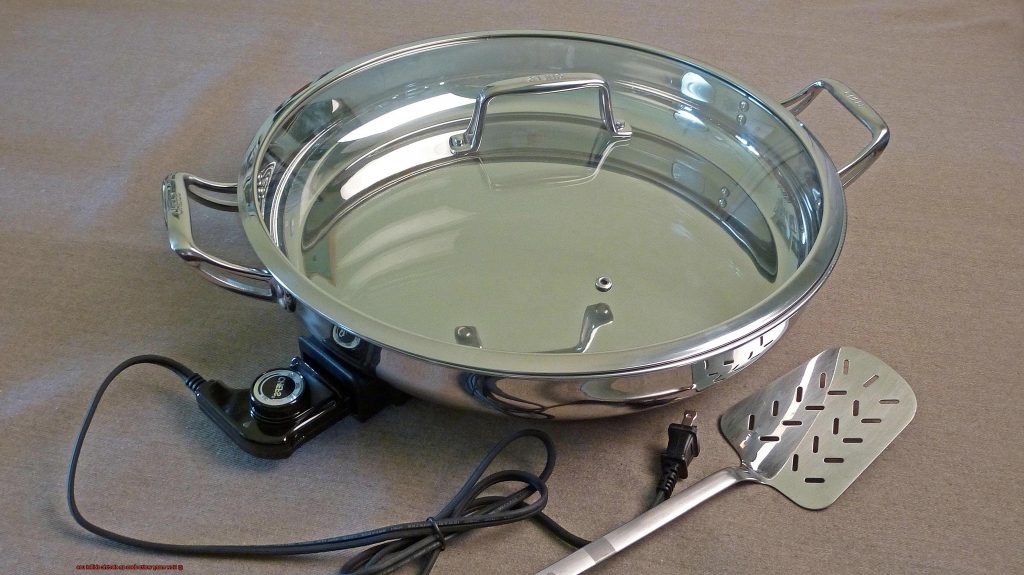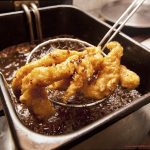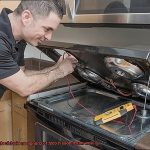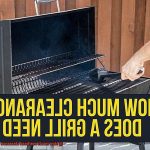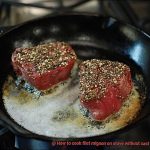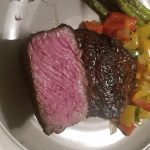Are you a kitchen wizard on the hunt for a new gadget to add to your culinary arsenal? Or maybe you’re just curious about the energy consumption of your household appliances. Either way, you’ve found yourself pondering, “How many watts does an electric skillet use?”
An electric skillet is a versatile appliance that can whip up anything from fluffy pancakes to sizzling stir-fry. But how much energy does it consume? The answer lies in its wattage.
In this blog post, we’ll dive into the world of electric skillet wattage and answer all your burning questions about their energy consumption. We’ll explain what wattage means, how it applies to electric skillets, and give you tips on what to look for when shopping for one.
But wait, there’s more. We’ll also explore the energy efficiency of electric skillets and provide savvy tips on how to save energy while using one. So whether you’re a seasoned chef or just starting out in the kitchen, get ready to learn everything there is to know about how many watts an electric skillet uses.
Contents
What Is an Electric Skillet?
Electric skillets are a must-have kitchen appliance for home cooks looking for quick and easy meal prep solutions. These versatile and convenient appliances can cook a wide range of dishes, from breakfast foods to stir-fries and stews. So, what exactly is an electric skillet and how does it work?
At its core, an electric skillet is a portable frying pan that runs on electricity. The heating element is embedded in the cooking surface, which is typically made of non-stick material. This allows for easy cooking and cleaning without the need for added oils or fats. The skillet comes with a temperature control dial that allows the user to adjust the heat level according to the recipe’s requirements.
One of the most significant advantages of an electric skillet is its versatility. You can use it to cook a wide variety of foods, such as eggs, pancakes, bacon, burgers, and much more. It’s especially useful for dishes that require precise temperature control, such as stir-fries and stews. Additionally, the skillet can double as a griddle, allowing you to cook multiple items at once.
When shopping for an electric skillet, there are several factors to consider. One of the most important is wattage. The wattage determines the amount of heat that the skillet can produce. Most electric skillets have a wattage range of 800 to 1500 watts, with the average wattage being around 1200 watts. A higher wattage means faster cooking times but also more energy consumption and higher electricity bills.
Another factor to consider is the size and shape of the skillet. Electric skillets come in various sizes and shapes, ranging from small round skillets to large rectangular ones. The size of the skillet you choose will depend on your cooking needs and the amount of food you plan to prepare.
In addition to wattage and size, the material and thickness of the skillet can also affect its heating capabilities. A thicker skillet may take longer to heat up, but it will also retain heat better and cook food more evenly.
What Is Wattage and How Does It Affect an Electric Skillet?
When it comes to electric skillets, wattage is a crucial factor that affects its performance. Simply put, wattage refers to the amount of power used by the skillet in one hour. Skillets can range from 600 watts to 1500 watts, and the wattage determines how fast the skillet heats up.
A higher wattage means your electric skillet will heat up faster, which is ideal for cooking foods that require high temperatures like steaks or stir-fries. In addition, higher wattage skillets can maintain a consistent temperature even when cooking large quantities of food.
On the other hand, lower wattage skillets may take a bit longer to heat up and may struggle to keep a consistent temperature when preparing large amounts of food. However, they are often preferred for dishes that require slow and gentle cooking, such as stews and soups. These skillets are also more energy-efficient.
It’s important to note that wattage isn’t the only determining factor for an electric skillet’s performance. Other factors such as material, size, and non-stick properties also play significant roles. For instance, skillets with non-stick coatings require less oil and make cleaning easier.
When selecting an electric skillet, consider your individual cooking needs and preferences. Do you need a skillet that heats up quickly or one that maintains a consistent temperature? Are you cooking large or small quantities of food? Additionally, think about other features like size, material, and non-stick properties.
Factors That Determine the Wattage of an Electric Skillet
One of the most vital aspects to consider is the wattage. The wattage determines how fast your skillet can heat up and how evenly it can cook food. As an expert, I can tell you that several factors determine the wattage of an electric skillet.
Firstly, size matters. The larger the surface area of your electric skillet, the higher the wattage required to heat it up adequately. For instance, a 12-inch electric skillet will require more wattage than an eight-inch electric skillet. This is because a larger surface area means more food to cook and requires more heat to cook it evenly.
Secondly, the material of your electric skillet plays a crucial role in determining its wattage requirements. Electric skillets come in different materials like aluminum, stainless steel, and cast iron. Each material has a different level of conductivity and heat retention, which affects the skillet’s wattage requirements. For example, a cast iron electric skillet may require more wattage than a stainless steel one because it takes longer to heat up and retains heat for longer.
Lastly, your intended use for your electric skillet is crucial in determining its wattage requirements. If you plan on using your skillet for simple tasks like frying eggs or making pancakes, then a lower wattage option may be suitable. However, if you plan on using your skillet for more complex tasks like grilling or searing meat, then a higher wattage option is necessary to ensure even cooking and proper searing.
Average Wattage of an Electric Skillet
And one of the most critical factors to consider is the wattage of your skillet. Think of it as the engine that drives your car – the higher the wattage, the more powerful and efficient your electric skillet will be.
On average, most electric skillets use between 1000-1500 watts of power. However, this can vary depending on the size and model of your skillet. For instance, a smaller skillet designed to cook for one or two people may only require 1000 watts of power, while a larger skillet meant for families of four or more may need up to 1500 watts.
But here’s where things get interesting: the wattage of your electric skillet also affects its cooking temperature. A higher wattage means a hotter skillet, which translates to faster and more precise cooking. So if you want to whip up meals in record time without compromising on quality, investing in a high-wattage electric skillet is the way to go.
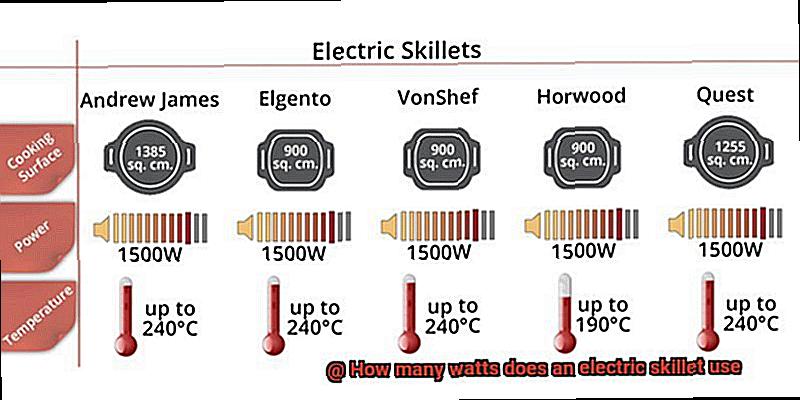
When shopping for an electric skillet, keep in mind your family size and cooking needs. If you’re cooking for a smaller household or have limited kitchen space, a lower wattage electric skillet may suffice. However, if you’re hosting dinner parties or feeding a large family regularly, it’s worth investing in a more powerful electric skillet.
Benefits of a Higher Wattage Electric Skillet
Upgrade to a higher wattage model to experience the many benefits it has to offer.
Firstly, a higher wattage electric skillet heats up much faster than a lower wattage one. This means you can start cooking your favorite dishes sooner and reduce overall cooking time. Plus, with better temperature control, you can achieve better cooking results.
But that’s not all. A higher wattage electric skillet can handle larger quantities of food, making it perfect for families or those who love to entertain guests. Its more powerful heating element ensures even cooking and quality results, no matter how much food you’re preparing.
In addition to its cooking prowess, a higher wattage electric skillet is also incredibly versatile. With quick heating times and consistent temperatures, you can use it for a variety of cooking techniques such as grilling, searing, sautéing, and frying. It’s like having multiple appliances in one.
Finally, investing in a higher wattage electric skillet means you’re getting an appliance that’s built to last. Its stronger heating element and sturdier construction ensure that it can withstand regular use and continue to serve you for years to come.
Drawbacks of a Higher Wattage Electric Skillet
While it may seem like a no-brainer to opt for the stronger option, there are several drawbacks to consider before making your decision. As an expert in this field, I’ve conducted thorough research and compiled a list of important factors to keep in mind.
Firstly, higher wattage means higher energy consumption. While a high wattage skillet may be perfect for cooking up a feast for your loved ones or entertaining guests, it may not be the best option if you’re trying to save on your energy bill. These skillets draw more power and will use more electricity than lower wattage models.
In addition to this, there is a potential risk of overheating. With higher wattage skillets, there is an increased chance of overheating, which can be dangerous if left unattended. It’s crucial to monitor the skillet carefully and ensure it doesn’t get too hot.
Furthermore, higher wattage skillets take longer to preheat. Since they consume more power, they require more time to reach their optimal cooking temperature. This can be frustrating if you’re in a hurry or trying to cook quickly.
Another drawback is the cost. As expected, higher wattage electric skillets tend to be more expensive than lower wattage models. If you’re on a tight budget, this may not be the best option for you.
It’s essential to consider these drawbacks when deciding which electric skillet to purchase. Although higher wattage models offer faster cooking times, they also come with significant disadvantages that need to be taken into account before making your choice.
In summary, the decision comes down to your individual needs and preferences. However, keeping these drawbacks in mind will help you make an informed decision that’s right for you. To summarize the drawbacks:
- Higher energy consumption
- Risk of overheating
- Longer preheating time
- More expensive
Other Factors That Affect Heating Capabilities of an Electric Skillet
When it comes to heating capabilities, an electric skillet’s wattage rating is just the tip of the iceberg. There are several other crucial factors to consider that can significantly impact your cooking results.
Firstly, the size and thickness of the skillet’s cooking surface play a vital role in its heating capabilities. While larger and thicker surfaces take longer to heat up, they also retain heat better, resulting in more even cooking. So, if you have a big family or like batch cooking, investing in a larger surface area might be worth it.
The construction material is another significant factor to consider. Skillets made of cast iron or stainless steel conduct heat well and can reach higher temperatures than those made of aluminum or non-stick materials. It’s essential to consider your cooking needs and preferences when selecting the right material for your skillet.
The shape and depth of the skillet can also affect its heating capabilities. A deeper skillet may take longer to heat up, but it can hold more food, allowing for larger batches to be cooked at once. On the other hand, a shallow skillet heats up faster but has less capacity.
The temperature control mechanism is also crucial in achieving optimal cooking results. Skillets with precise temperature controls offer more accurate cooking, while those with simple on/off switches offer less control over the cooking process. Consider how much control you want over your cooking before investing in an electric skillet.
Finally, the type of food being cooked can impact the skillet’s heating capabilities. Foods with high moisture content may release moisture into the skillet, reducing its ability to maintain high temperatures. On the other hand, dry foods like pancakes and eggs may not have this effect and can be cooked at higher temperatures.
0D3DayNFd-k” >
Conclusion
To sum up, electric skillets are a versatile and convenient appliance that can cook a variety of dishes to perfection. The wattage of an electric skillet determines its heating capabilities, with most models ranging from 800 to 1500 watts. While higher wattage models offer faster cooking times and more precise temperature control, they also consume more energy and come with significant drawbacks such as overheating and longer preheating times.
When shopping for an electric skillet, it’s crucial to consider several factors such as size, material, non-stick properties, and the type of food being cooked. The construction material plays a vital role in heat conduction, with cast iron or stainless steel skillets being better conductors than those made of aluminum or non-stick materials.
Ultimately, the decision to invest in a higher wattage electric skillet depends on individual needs and preferences. If you’re cooking for a larger family or frequently entertain guests, a higher wattage model may be worth the investment. However, it’s essential to keep in mind the potential drawbacks and weigh them against other factors when making your decision.
In conclusion, choosing the right electric skillet requires careful consideration of all these factors.

